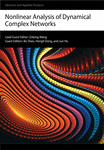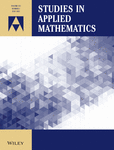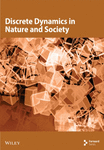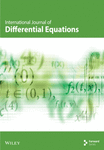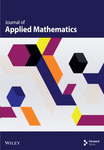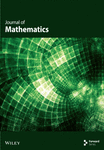Journal list menu
Export Citations
Download PDFs
Editorial
Open Access
oa
Nonlinear Analysis of Dynamical Complex Networks
- First Published: 28 November 2013
Review Article
Open Access
oa
Variance-Constrained Multiobjective Control and Filtering for Nonlinear Stochastic Systems: A Survey
- First Published: 26 November 2013
Research Article
Open Access
oa
Distributed Impulsive Consensus of the Multiagent System without Velocity Measurement
- First Published: 12 August 2013
Research Article
Open Access
oa
Nonfragile Gain-Scheduled Control for Discrete-Time Stochastic Systems with Randomly Occurring Sensor Saturations
- First Published: 24 July 2013
Research Article
Open Access
oa
Chaos Synchronization Based on Unknown Input Proportional Multiple-Integral Fuzzy Observer
- First Published: 16 July 2013
Research Article
Open Access
oa
Achieving Synchronization in Arrays of Coupled Differential Systems with Time-Varying Couplings
- First Published: 15 July 2013
Research Article
Open Access
oa
Optimal Guaranteed Cost Control of a Class of Discrete-Time Nonlinear Systems with Markovian Switching and Mode-Dependent Mixed Time Delays
- First Published: 15 July 2013
Research Article
Open Access
oa
Convergence Rate of Numerical Solutions for Nonlinear Stochastic Pantograph Equations with Markovian Switching and Jumps
- First Published: 26 June 2013
Research Article
Open Access
oa
Distributed Consensus for Discrete-Time Directed Networks of Multiagents with Time-Delays and Random Communication Links
- First Published: 26 June 2013
Research Article
Open Access
oa
Estimate of Number of Periodic Solutions of Second-Order Asymptotically Linear Difference System
- First Published: 25 June 2013
Research Article
Open Access
oa
Sliding Intermittent Control for BAM Neural Networks with Delays
- First Published: 25 June 2013
Research Article
Open Access
oa
Deconvolution Filtering for Nonlinear Stochastic Systems with Randomly Occurring Sensor Delays via Probability-Dependent Method
- First Published: 20 June 2013
Research Article
Open Access
oa
Robust Almost Periodic Dynamics for Interval Neural Networks with Mixed Time-Varying Delays and Discontinuous Activation Functions
- First Published: 17 June 2013
Research Article
Open Access
oa
An Analysis of Stability of a Class of Neutral-Type Neural Networks with Discrete Time Delays
- First Published: 12 June 2013
Research Article
Open Access
oa
Synchronization of Switched Complex Bipartite Neural Networks with Infinite Distributed Delays and Derivative Coupling
- First Published: 30 May 2013
Research Article
Open Access
oa
Stabilization and Controller Design of 2D Discrete Switched Systems with State Delays under Asynchronous Switching
- First Published: 16 May 2013
Research Article
Open Access
oa
Information Propagation in Online Social Network Based on Human Dynamics
- First Published: 12 May 2013
Research Article
Open Access
oa
BIBO Stability Analysis for Delay Switched Systems with Nonlinear Perturbation
- First Published: 12 May 2013




